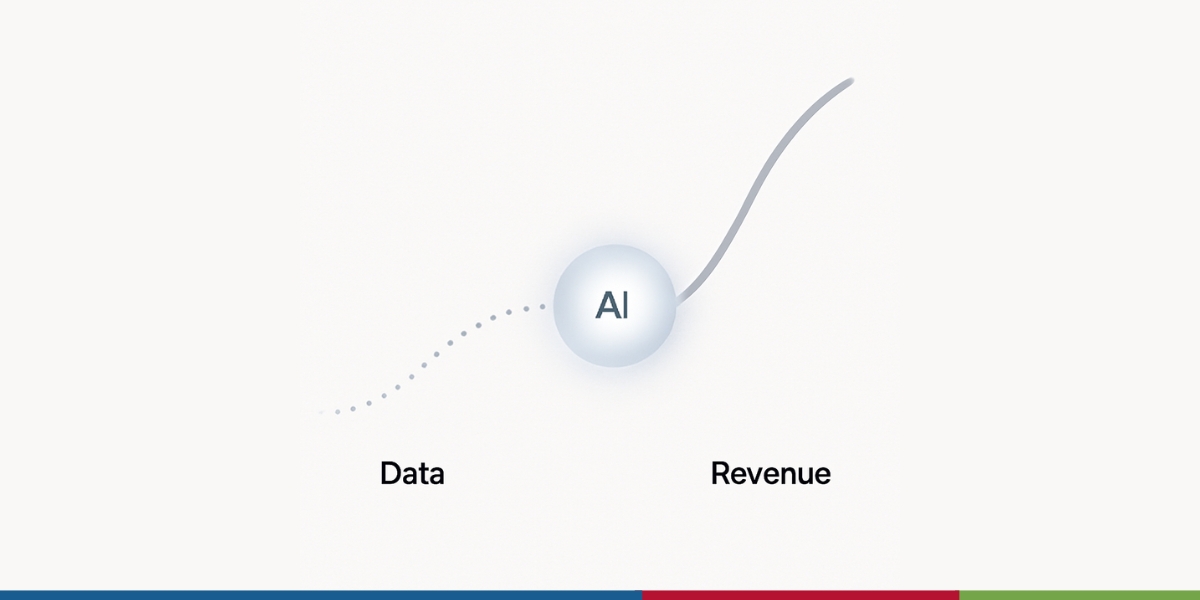Driving Innovation: How Full Stack Development, AI in Healthcare, and Data Analytics in Excel Are Shaping the Future

4 min read | By Postpublisher P | 18 April 2025 | Technology
In today’s rapidly evolving digital landscape, technology is at the core of every significant advancement, from seamless web applications to groundbreaking healthcare solutions and smart data-driven decision-making. Among the many tech domains leading the way, Full Stack Development, AI in Healthcare, and Data Analytics in Excel stand out as critical pillars that continue to transform industries across the globe.
Let’s explore how these three distinct yet interconnected domains are shaping the future—and why gaining skills in them can set you apart in the ever-competitive job market.
Full Stack Development: Powering Modern Web Solutions
In the digital age, nearly every business—from startups to multinational corporations—relies on web and mobile platforms. Behind these digital interfaces are full stack developers, professionals capable of working on both the front-end (user-facing side) and back-end (server-side logic and database) of applications.
A full stack developer course equips learners with a comprehensive understanding of programming languages like JavaScript, Python, and frameworks like React, Angular, Node.js, and Django. These developers build, deploy, and maintain applications end-to-end, making them invaluable assets to companies of all sizes.
Why Full Stack Developers Are in Demand:
●𝐕𝐞𝐫𝐬𝐚𝐭𝐢𝐥𝐢𝐭𝐲: They can manage entire projects without heavily relying on multiple specialists.
●𝐂𝐨𝐬𝐭-𝐄𝐟𝐟𝐞𝐜𝐭𝐢𝐯𝐞𝐧𝐞𝐬𝐬: Startups especially benefit from hiring one person who can wear multiple hats.
●𝐒𝐩𝐞𝐞𝐝: With a holistic view of the project, they can streamline development and deployment processes.
Whether you’re looking to build your startup’s website, develop mobile apps, or become a tech consultant, a solid foundation through a full stack developer course can open doors to high-paying, in-demand roles.
AI in Healthcare: Revolutionizing Patient Care
While full stack developers build the digital world, artificial intelligence is reshaping how we interact with it—particularly in healthcare. AI in healthcare is one of the most exciting and transformative applications of technology in recent years, improving outcomes, reducing costs, and making healthcare more accessible.
From predictive analytics and diagnostic tools to robotic surgeries and personalized treatment plans, AI is changing the way care is delivered. Algorithms can now analyze medical records, detect anomalies in scans, predict disease progression, and even suggest treatment options with remarkable accuracy.
Real-World Examples of AI in Healthcare:
●𝐑𝐚𝐝𝐢𝐨𝐥𝐨𝐠𝐲: AI systems can analyze X-rays and MRIs faster than human radiologists in some cases, leading to quicker diagnosis and treatment.
●𝐃𝐫𝐮𝐠 𝐃𝐢𝐬𝐜𝐨𝐯𝐞𝐫𝐲: Machine learning accelerates drug development by predicting how compounds will behave and identifying potential side effects before clinical trials.
●𝐕𝐢𝐫𝐭𝐮𝐚𝐥 𝐇𝐞𝐚𝐥𝐭𝐡 𝐀𝐬𝐬𝐢𝐬𝐭𝐚𝐧𝐭𝐬: Chatbots and virtual assistants powered by AI help patients manage medication, schedule appointments, and get instant support.
Ethical and Practical Considerations
As promising as it is, integrating AI in healthcare comes with challenges like patient data privacy, algorithm bias, and the need for regulatory oversight. However, when implemented responsibly, AI holds the potential to close gaps in care, especially in under-resourced regions.
For professionals in tech or medicine, understanding how AI impacts healthcare delivery is becoming essential. Courses and certifications in AI can provide the knowledge needed to work on innovative health tech projects or collaborate with medical professionals to solve real-world problems.
Data Analytics in Excel: Unleashing Insights from Everyday Data
While AI brings the power of automation and prediction, data analysis is still a foundational skill across all industries. And what tool is more ubiquitous than Microsoft Excel?
Excel for data analysis continues to be a favorite among data professionals, marketers, business analysts, and even small business owners. Despite the rise of Python, R, and advanced BI tools, Excel’s accessibility, functionality, and flexibility make it irreplaceable for many use cases.
How Excel Empowers Data Analysis:
●𝐏𝐢𝐯𝐨𝐭 𝐓𝐚𝐛𝐥𝐞𝐬:Summarize and manipulate large datasets with just a few clicks.
●𝐃𝐚𝐭𝐚 𝐂𝐥𝐞𝐚𝐧𝐢𝐧𝐠 𝐓𝐨𝐨𝐥𝐬: Remove duplicates, filter data, use conditional formatting, and leverage data validation tools for better accuracy.
●𝐒𝐭𝐚𝐭𝐢𝐬𝐭𝐢𝐜𝐚𝐥 𝐅𝐮𝐧𝐜𝐭𝐢𝐨𝐧𝐬: Analyze trends using built-in functions like AVERAGEIFS, VLOOKUP, CORREL, and more.
●𝐕𝐢𝐬𝐮𝐚𝐥𝐢𝐳𝐚𝐭𝐢𝐨𝐧: Create charts, heatmaps, and dashboards that help convey data stories effectively.
Whether you’re evaluating sales performance, analyzing customer feedback, or conducting market research, excel for data analysis is an essential skill. It serves as a stepping stone for more advanced tools while still being robust enough for most day-to-day tasks.
The Intersection: How These Skills Complement Each Other
Although Full Stack Development, AI in Healthcare, and Excel-based data analytics may seem like separate domains, they often intersect in real-world applications:
1. Healthcare Dashboards
A full stack developer can build a web-based dashboard that pulls patient data and visualizes it in charts and tables. This dashboard could use excel for data analysis techniques behind the scenes to calculate key performance indicators (KPIs) for hospital administrators.
2. AI-Powered Web Applications
A full stack team might integrate an AI model that predicts patient readmission risk into a hospital’s internal app. This fusion of full stack engineering and AI in healthcare ensures that the tool is both functional and intelligent.
3. Data-Driven Decision Making in Tech Startups
Early-stage startups often use Excel to manage user data and analyze performance. Combining this with backend APIs and front-end visualizations built by full stack developers results in a cost-effective, intelligent business solution.
4. Upskilling for Hybrid Roles
Today, roles like “AI Engineer with Full Stack Background” or “Healthcare Analyst with Data Skills” are in high demand. Learning across these disciplines makes professionals more agile, innovative, and attractive to top employers.
Conclusion
The convergence of web development, artificial intelligence, and data analytics is not just a trend—it’s the foundation of modern digital transformation. Businesses across sectors are seeking professionals who understand how to build applications, interpret data, and implement intelligent solutions.
Here’s how you can start:
●Take a full stack developer course to learn how to build modern web and mobile apps.
●Explore the transformative potential of AI in healthcare to understand how machine learning is saving lives and reducing costs.
●Master excel for data analysis to make sense of data, no matter your industry.
●By equipping yourself with these in-demand skills, you’re not just preparing for a job—you’re preparing to lead in a tech-driven future.
The latest from our editors
Join over 150,000+ subscribers who get our best digital insights, strategies and tips delivered straight to their inbox.


